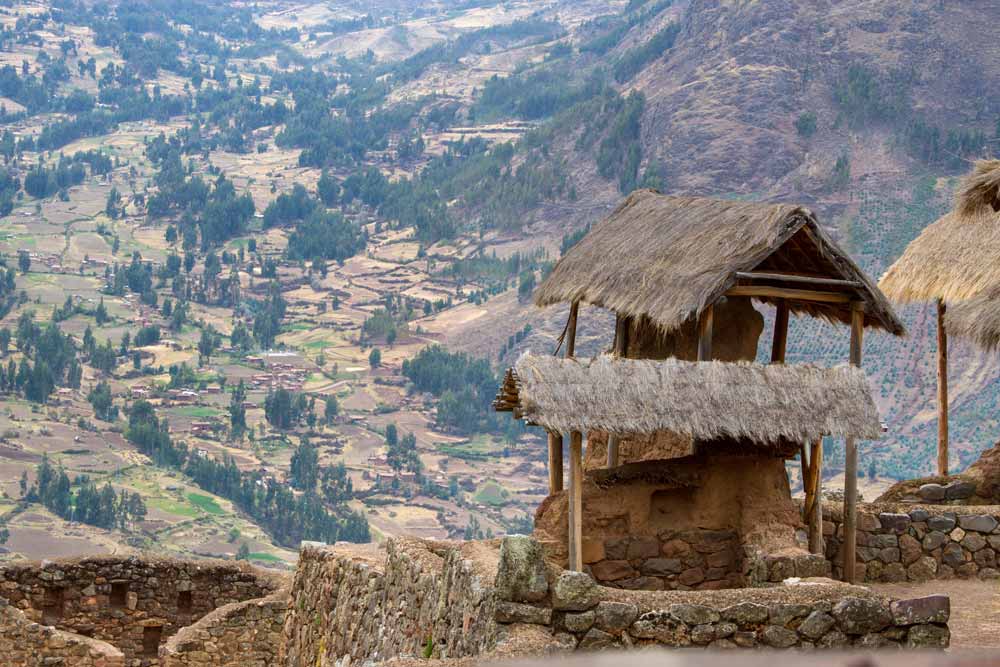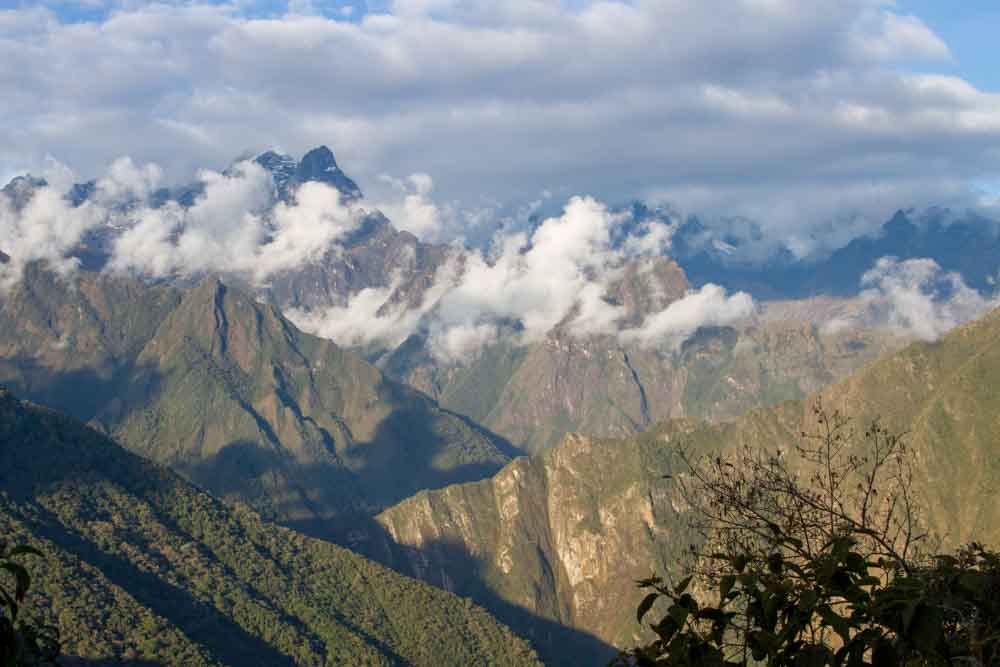The Amazonian rainforest is one of Peru’s most interesting, diverse, and largely untouched regions. One might typically think about Brazil when you consider the rainforests of the region. While the portion of the rainforest in Peru is smaller, it is equally diverse, interesting, and valuable to the ecology of our planet. Amazingly, the Amazonian rainforest actually contains about 10% of the known species on our planet, including many endangered species. This makes it one of the most diverse places to visit if you’re a nature lover.
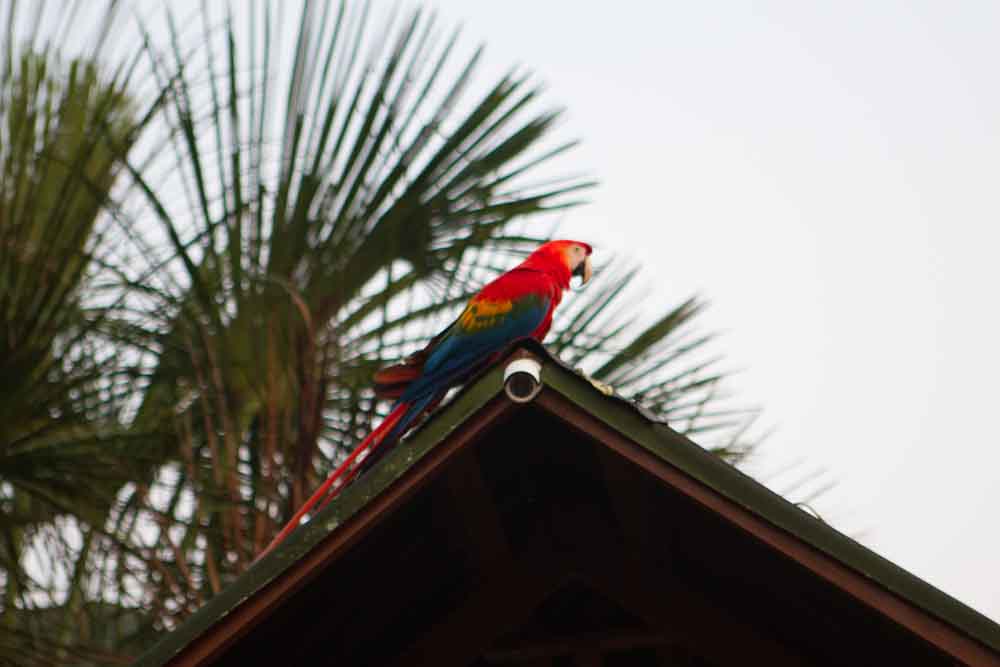
Porto Maldenado – The Gateway to the Amazon
The Amazon River and its many tributaries provide the primary mode of transportation to the interior of the rainforest. Without the river it would be virtually impossible to travel with the forest and it’s thick vegetation.
Access to the interior of the Peruvian rainforest is typically through Porto Maldonado, a small town with a modest airfield, which is adjacent to the Madre de Dios river. The name of the river roughly translates to “mothers of God”, which is a reflection of its importance to life in the Amazon.
Where To Stay in a Rainforest
After some extensive research, we decided to spend our time at the Ecoamazonia Lodge. We selected this location because of their regard for the natural environment, sustainable tourism, and comfortable accommodations. The facilities at the lodge were primarily solar powered which is great for the environment. However, at times it left hot water and electricity in short supply, depending on the weather. A quick internet search will reveal that there are many lodges available to meet your needs and/or budget. We definitely recommend Ecoamazonia, however, if you decide to stay somewhere else, be sure to pay attention to available online reviews to match the resort to your needs.
“The clearest way into the universe is through a forest wilderness”
~ John Muir
Transportation to our lodge required a two-hour boat ride from the town, which was a scenic tour in and of itself. We saw a lot of wildlife and many locals fishing, bathing, and even mining the river for gold along the way. Within a few minutes, the dense lushness of the rainforest was very apparent.
What to Expect
Even though visited the rainforest in September, which is in the spring in the Southern Hemisphere, the temperatures were very warm. With average temperatures typically around 28 C (83 F) with humidity higher than 75% we expected it to be warm. However, temperatures, while we were there, hovered in the mid-90s during the day, with humidity levels that felt much higher. Be sure to consider bringing enough changes of clothes to keep yourself fresh!
We found the sounds of the wildlife, the natural environment, and perhaps the richness of the oxygen from the rainforest to be absolutely exhilarating. Falling asleep to the sounds of the birds and insects and waking up to the early morning calls of howler monkeys off somewhere in the forest was certainly a new and unique experience. The resort property itself had plenty of wildlife to see and an interesting tropical garden where they grow much of the food that they serve.
This lodge provided shelter, rehabilitation, and eventual release for animals and birds that were injured or overly domesticated in the nearby towns. Unfortunately, it is all too common for locals to domesticate rainforest wildlife then release them when they become too difficult to care for. The team at the lodge put a lot of energy into preparing these animals to live successfully in the wild. Those that could not successfully transition back to nature were kept on the lodge property and cared for much like pets.
In fact, the lodge owned an island in the middle of the Madres river that they called “monkey island”. They used this rather large island of many acres as a monkey rehabilitation sanctuary. The island provided the right environment, including food sources, to allow the monkeys to live independently, but without the threat of many predators. During our visit, it was apparent that many of the monkeys had been domesticated and were quite accustomed to visitors. This made for an entertaining visit for sure! The maintenance costs of the island are funded from the lodge fees from visitors, which allows the staff to care for these animals that would otherwise have difficulty surviving.
One of the most interesting activities was a nighttime river tour on the Madres. A slow cruise just off of the shoreline with a high-powered flashlight revealed many nocturnal creatures that are difficult to see during the hot and sunny daytime. Caimans, crocodiles, and rather large species of fish were all easy to find on the trip. Gleaming red eyes reflecting the light were scattered along the shoreline as these creatures sought food under the cover of darkness. A very unique experience to say the least.
We also took a guided tour through the Amazonian “swamplands” which revealed more wildlife and a different jungle ecology. Crocodiles watched from just beneath the surface. Bats harbored underneath shelter rooves. Large turtles were everywhere, sunning themselves on logs or rocks. The abundance of wildlife and the largely undisturbed nature of their surroundings was absolutely beautiful.
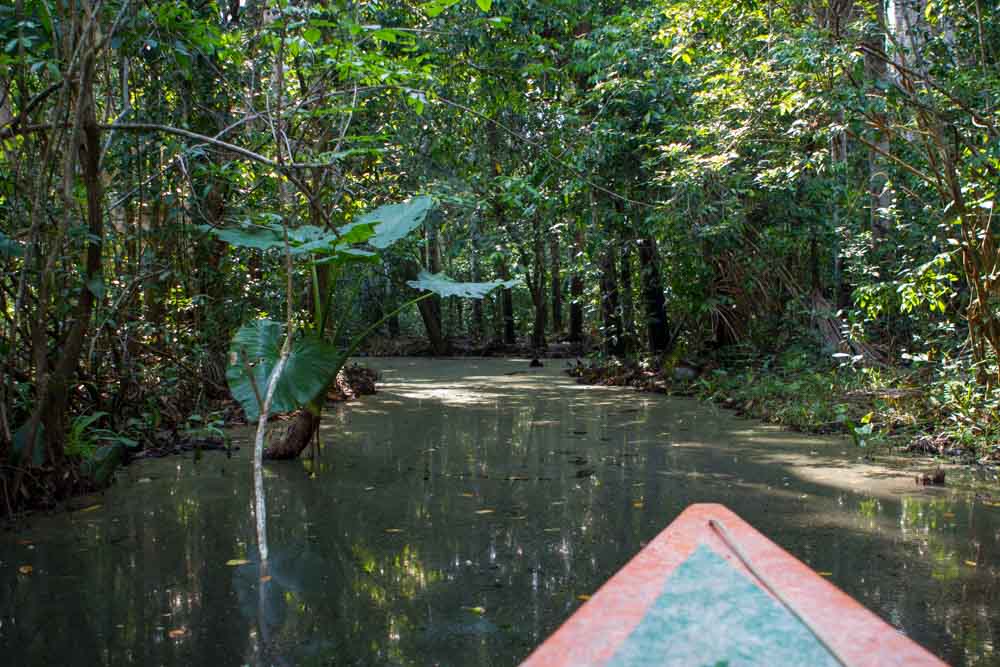
10 Tips for Visiting the Rainforest
1 – Bring Strong Insect Repellant – This cannot be stressed enough. Be sure to bring the strongest insect repellant that you can find – and use it often. We brought Bens Tick & Insect Repellant that was 100% DEET and sprayed it liberally multiple times a day while in the rainforest. We literally had one bite between the two of us but encountered others on our return back to Porto Maldonado that appeared to be literally covered with nasty bites. Also, be sure to frequently check yourself for ticks and pests just to be sure. We did not encounter any but if you do you will want to remove them quickly.
2 – Wear Light Clothing that Covers Your Arms & Legs – We brought lightweight long pants and long sleeve shirts that were lighter colors, which apparently helps not attract bugs. Keeping your arms and legs covered, including socks is an important way to fend off insects. Also try to tuck your pants into your socks, particularly when walking through the jungle, to keep yourself clear.
3 – Wear Good Walking Shoes & Socks – If you plan to tour the rainforest you will be on your feet a lot. The trails that we used were generally level and without too many impediments, but they are always damp and slippery and there is also the strong possibility of rain. Be sure that you have footwear to handle these situations including good socks to prevent blisters and the like.
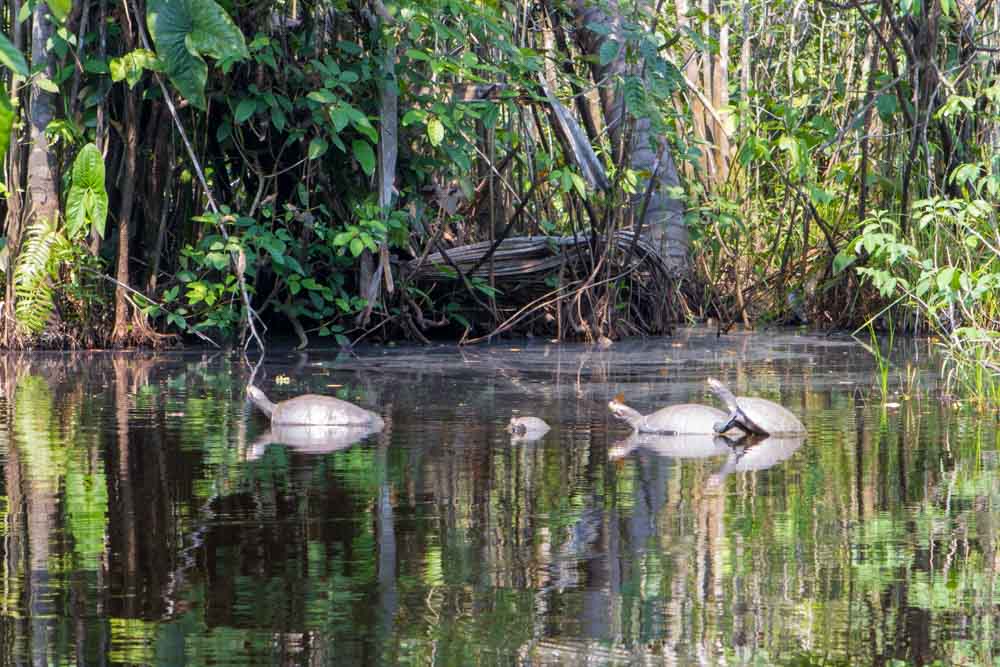
4 – Consider a Guide When Trekking – When you visit the rainforest we highly recommend that you consider guided tours. First and foremost, this provides a much safer way to explore the vast network of trails through the forest. The density of the vegetation and the similarity of the trails would make it very easy to get lost. In addition, we got a lot more out of our tour with the help of the guides. There were many, many interesting things to see that we would have not recognized or walked right by without the help of an experienced eye. These included special vegetation, wildlife in the trees, insects on or in the ground, and of course an occasional snake. Our guide always carried a manchette to deal with the vegetation and as a general safety precaution. We toured the rainforest for a few hours every morning and experienced so many things that we’d only read about!
5 – Be Active Early and Later in the Day – The heat and humidity in the rainforest can be oppressive during the peak hours of the day. Walking the trails and trekking are best experienced outside of the hottest part of the day. You will also get the added benefit that the wildlife is more active during the cooler portions of the day, increasing the likelihood of you seeing something interesting. The creatures in the rainforest have the good sense to lay low during the heat, so we should too!
“It’s hard to appreciate the importance of the rainforest because it seems so far away, but it’s vital to the survival of the planet as we know it”
~ Lily Cole
6 – Explore the Local Food & Drink – We were able to enjoy many of the local food-related traditions during our stay at the lodge. Unusual vegetables, food cooked in banana leaves, and rainforest fruits were regularly on the menu. It was during this trip that we were introduced to the Pisco Sour, which is a refreshing cocktail based on Pisco, which is a Peruvian version of brandy that does not resemble what we had known traditionally. Made like a whiskey sour, but with Pisco as the base, these cocktails found their way into our glasses a couple of times a day.
7 – Definitely Bring Your Camera – The images that you will capture in the rainforest will be unlike anything that you’ve seen elsewhere. The uniqueness of the entire ecology including the vegetation and wildlife will make for some of the most memory-invoking images. If you have access to a DLSR or other camera with a telephoto lens it is well worth bringing along on the trip. See our photography section for more travel-related tips.
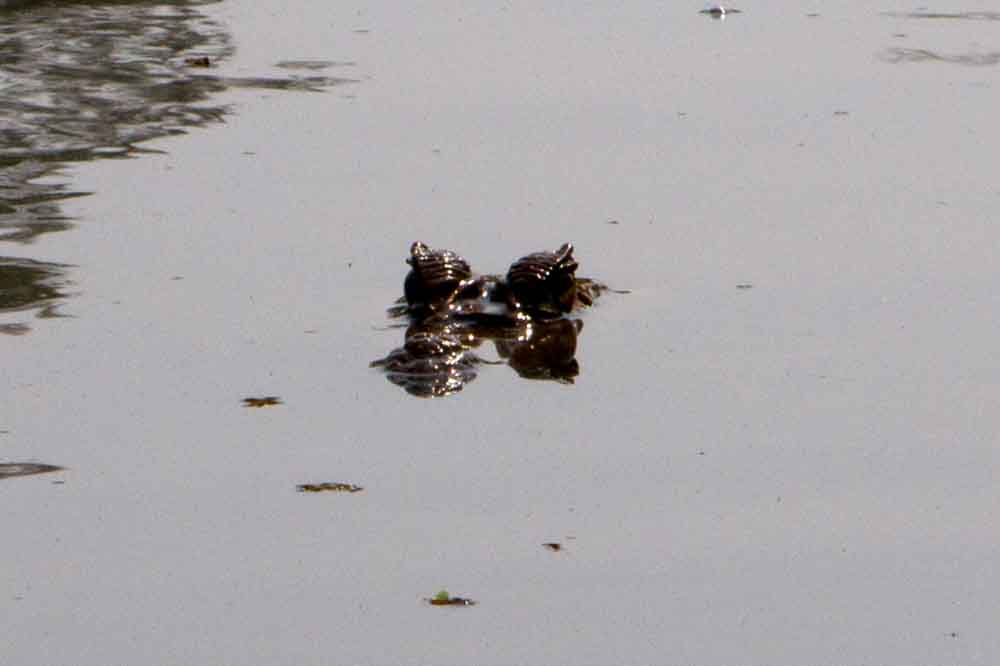
8 – Stay Well Hydrated – Seriously! The high heat and humidity, combined with activities such as hiking or exploring will cause you to perspire more than you might realize. You need to replenish with plenty of fresh, clean, preferably bottled water. Grab your backpack and take more than you think you might need when you venture out. Be sure to drink plenty of water throughout the day to avoid the symptoms of dehydration. Remember that if you feel really thirsty, you are too late and should increase your regular water consumption.
9 – Don’t Drink the Tap Water – Just don’t do it. Most of us do not have the intestinal fortitude to digest the bacteria that is commonly found in Peruvian water, particularly in remote locations such as rainforest lodges. Bottled water will be readily available as the staff of these resorts understand this situation and do not want their guests to become ill. It’s also important to ask the staff about how they wash the food that they serve, as this can also be a source of bacteria. While there, we avoided salads and other uncooked foods that could have been washed in the local water – just to be extra cautious.
10 – Don’t Be Surprised by Bugs or Creatures – It is very likely that you will encounter insects or small lizards in your accommodations. This is normal in the rainforest and nothing to be concerned about. Most lodges go to significant lengths to reduce the likelihood that you find an unwanted guest in your quarters, but it does happen. If you do happen across something concerning, notify the staff and I’m sure that they will take care of it.
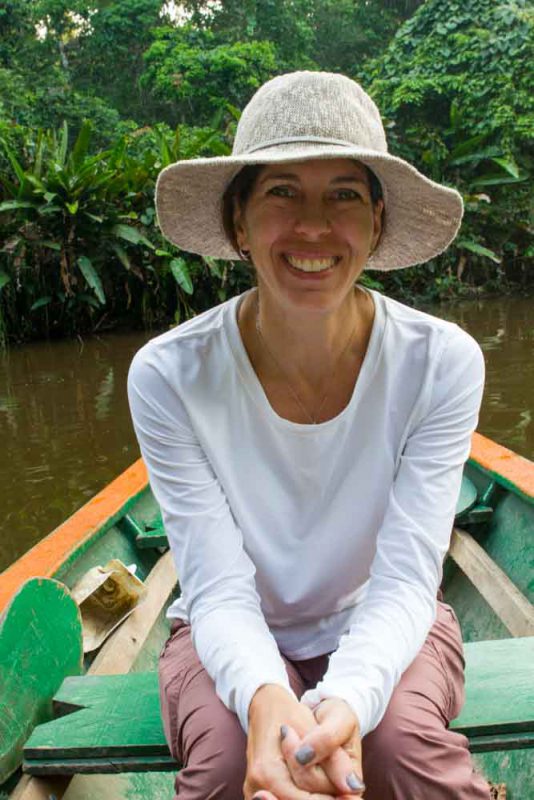
Ready for the Trip Through the Swamplands
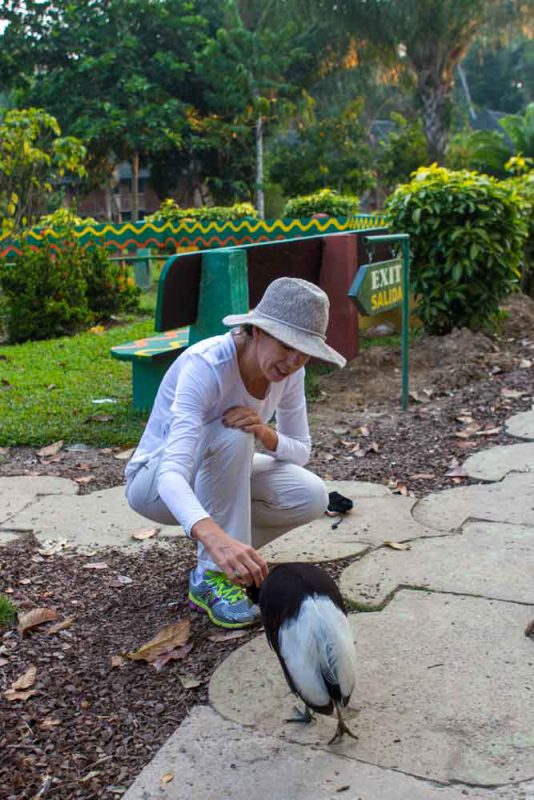
Making Friends with a Trumpeteer
A visit to the Amazonian rain forest in Peru will reveal many unique plant and animal species. From unique birds and their habitat to, insects, reptiles, and mammals, the variety of wildlife in the rainforest is unseen anywhere else in the world. When you visit keep your eyes up (and down) and listen carefully as you will undoubtedly experience some unusual and exotic creatures.
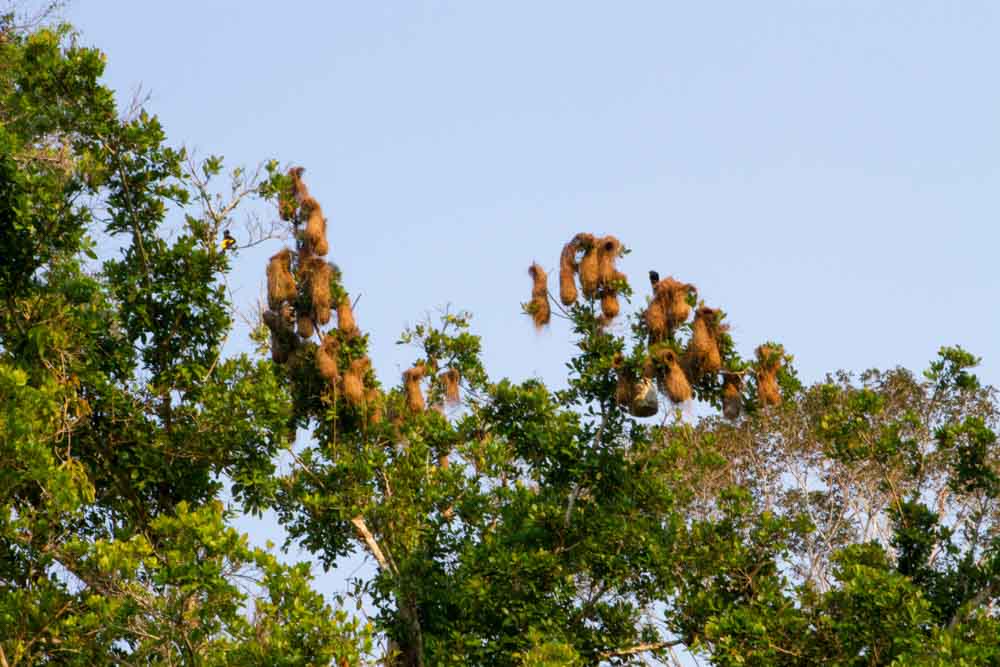
At the end of our time in the rainforest, we had experienced as much as one can in 5 days and left with many, many photos and memories that could never be replaced. When you visit the Peruvian Amazon, you will never see the world in the same way again.


